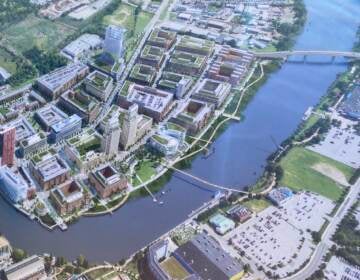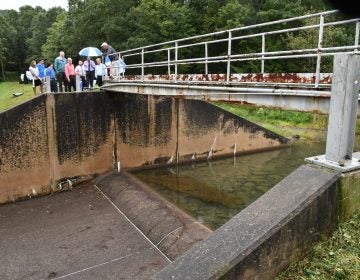For cash-strapped Johnstown, sewer system overhaul comes with hefty costs
Johnstown is not an outlier when it comes to these problems, though its situation may be more severe.
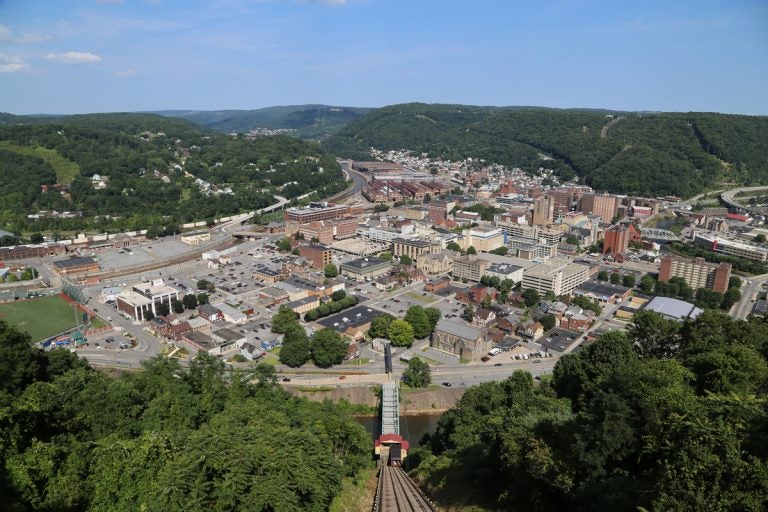
Johnstown is a city of 19,000 residents situated at the confluence of two rivers and surrounded by hills. (Margaret J. Krauss/WESA)
A wood-plank bridge crosses the Stonycreek River in Johnstown, Pennsylvania, and leads to the lower boarding platform of the city’s incline. A red car on a steeply angled track whisks passengers 500 feet up a hillside. The short ride offers sweeping views of the city, and the quickest way to understand Johnstown’s sewer problem.
Nicknamed “Flood City,” the community of 19,000 is surrounded by steep hills and spread over a low-lying bowl of land at the confluence of two rivers. From this view it’s easy to see how the Stonycreek and the Little Conemaugh join to form the Conemaugh River.
Johnstown is most famous for the catastrophic flood that nearly wiped the city out in 1889. Now, it’s dealing with a different kind of flood — one involving lots and lots of sewage.
When it rains heavily, stormwater overwhelms the sewer system, which means urine and excrement overflow from Dornick Point Wastewater Treatment Plant and into the Conemaugh River. The plant has a permit from the Department of Environmental Protection (DEP) that allows them to discharge treated sewage into the river while they fix the underlying problem. The permit states those discharges are not expected to affect public water supplies.
But, ideally, Johnstown would like to harness the Conemaugh River as a recreational asset. To do so requires addressing something more foundational: an overhaul of the sewer system.
It’s a painful, expensive necessity, said Monsignor Raymond Balta, a Catholic priest and board chairman of the Johnstown Redevelopment Authority, or JRA.
“There’s no glory in sanitary transmission and treatment,” he said. “You’re not going to sit on a front porch and say, ‘Hey, Mike come over here and look at my lateral lines. I mean aren’t they beautiful.’”
Johnstown has avoided the sewer problem for decades. It took state intervention to make something happen. In 2010, Johnstown signed an agreement with the Department of Environmental Protection to rehabilitate its sewers by 2023, or risk penalties for violating the Clean Water Act.
This has kicked off what’s essentially become a $165 million citywide makeover, digging up 98 miles of sewer lines that serve thousands of homes and businesses.
But this created a new problem: very angry residents.
In order to fully remediate the issue, homeowners also have to replace the lateral lines running from their homes to the city’s lines.
Imagine your city is being torn up — cones everywhere, streets in various states of demolition or reconstruction — and then you suddenly have to invest $2,000 to $4,000 in replacing your personal piece of the sewer system.
Bernie Krcha, 86, was pretty resigned to it.
“DEP said that they had to stop this sewerage going into the river because of the people downstream,” he said. “They use that water. OK, I understand that. I wouldn’t want to use somebody else’s toilet water.”
Johnstown Regional Sewage, part of JRA, does offer a loan program to help homeowners manage those costs, but they can still be a hardship for residents.
Krcha has seen how resilient Johnstown can be: he lived through two big floods, one in 1936 and one in 1977, and watched the city rebuild. He replaced his sewer lines a year ago, but has watched his neighbors struggle to afford to do the same.
“I just think the planning just is lousy,” he said. “They keep changing horses in the middle of the stream.”
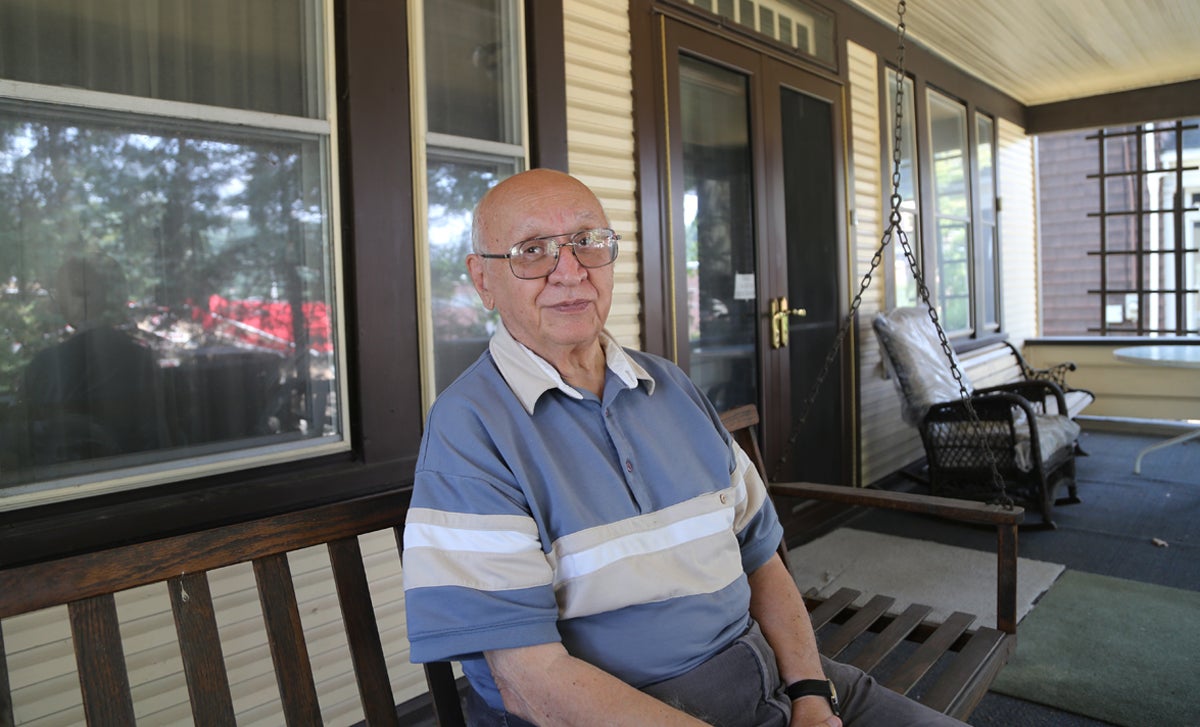
Water runs downhill
Johnstown is not an outlier when it comes to these problems, though its situation may be more severe. State officials say the sewer systems of 143 municipalities across Pennsylvania have in some way violated state and federal law.
And while the city of Johnstown has a serious sewer issue on its hands, they’re smack-dab in the midst of a region facing similar challenges.
The Johnstown Redevelopment Authority owns and operates the Dornick Point Wastewater Treatment Plant, but 20 separate surrounding municipalities send waste to the plant. When DEP ordered JRA to prevent sewage from being discharged into the river by 2023, JRA had to ask all of those communities to help make that possible.
“I’d always compared it to a funnel system,” said Balta. “We have 20 different jurisdictions pouring stuff into the top of the funnel and the EPA is fining us for what’s coming out of the bottom.”
Southmont Borough is one of those communities, perched on a hill about 3 miles east of Johnstown.
“All the communities in the area signed a consent order [with the DEP],”said Borough Manager Richard Wargo. “But not all the communities signed it the way we did.”
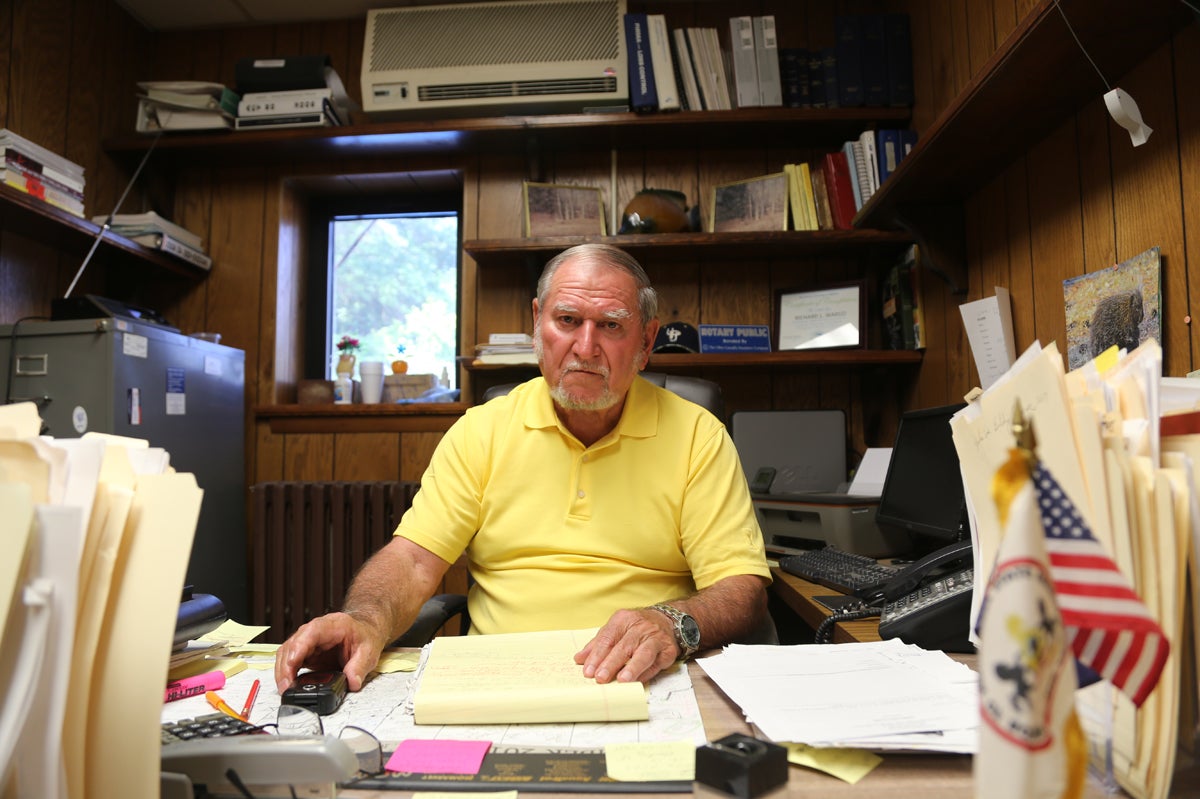
The estimated $12 million cost of Southmont’s sewer overhaul included replacing all of the community’s private lateral lines, saving homeowners significant cost. Wargo said they negotiated with DEP to allow the community to obtain a state grant as well as a low-interest, 30-year loan from the revolving state fund, PennVest.
Since 2015, the borough has also doubled the sewer rate it charges its 950 residences and businesses. Wargo believes communities across Pennsylvania will soon have to do the same; Johnstown and Southmont happened to go through it first.
“It’s just something that had to be done … The important thing is get that water cleaned up,” said Wargo, who volunteers as the president of a watershed association. “You have you have to have good quality water to have a good quality of life. It’s simple.”
The High Cost of Compliance
Johnstown’s problem, though, is of a much greater magnitude.
De-industrialization hit the city hard, shrinking its population and its tax base. Under the state’s financial assistance program for distressed municipalities, Johnstown ran a deficit for 25 years, breaking even for the first time in 2016. And although Johnstown residents have worked hard to make their city livable, the city has had little money to spend on the kinds of amenities that might attract newcomers.
Then the massive and expensive sewer project came along.
Frustration at the project, now moving into its seventh year, seethes at monthly city council meetings. At the August meeting there was confusion regarding a sinkhole likely created by the sewer project, a rundown of city finances that lasted two hours, and frequent spats between members of council and the mayor.
Resident and former mayoral candidate John DeBartola used his five minutes of public comment to express disappointment.
“I got here at 6 p.m.from work. I stayed ’til 9 p.m. and I saw dysfunction,” he said when the public comment period began at 10:30 p.m. In that time, DeBartola said he’d already gone to dinner and come back to the meeting. “No talking about job creation, no talking about saving our town. I’m embarrassed. I went to dinner because I had to have a break from you people.”
Johnstown Mayor Frank Janakovic said he understands why people are frustrated, but see few options other than pressing forward.
“The can’s been kicked down the road for too long,” he said. “And if some of these things were done, if we could always change the past that would be great but we can’t … and I can assure you we’re trying to do our best to to please all entities and do the job right.”
In Johnstown, residents understand why the state has ordered the fix, but it’s expensive. Deindustrialization shrunk Johnstown’s tax base; the city’s run a deficit for 25 years. And then the sewer project came along, with its $165 million price tag.
Janakovic’s office is right next to City Hall; hanging on the building’s front door is a sign that reads “Alive And Well & Open For Business In Downtown Johnstown.”
But the sewer project is one of the things that makes attracting new companies a lot harder, said Arch Liston, former city manager.
“They’re going to look at us and they’re going to say, ‘Your costs are too high, your debt is too high, your pension liability is too high.’”
The state revolving loan fund, PennVest, has covered some of Johnstown’s costs, but there’s a limit to how much they can help, as they’re also supporting 140 other wastewater projects in the state.
So for Johnstown, one of the only options to pay for the sewer overhaul is to raise water and sewer rates. Liston says more and more people are walking away from their homes because they can’t handle the costs associated with upkeep. He’s worried the increases in water or sewer bills could be the last straw.
“It’s creating a substantial financial burden that in 10 years could create a financial collapse of the city,” he said.
To avoid that, city leaders are hoping to find some way to restructure the project’s debt. Regardless, in 2018, the next sections of the city are slated for sewer reconstruction.
WHYY is your source for fact-based, in-depth journalism and information. As a nonprofit organization, we rely on financial support from readers like you. Please give today.



